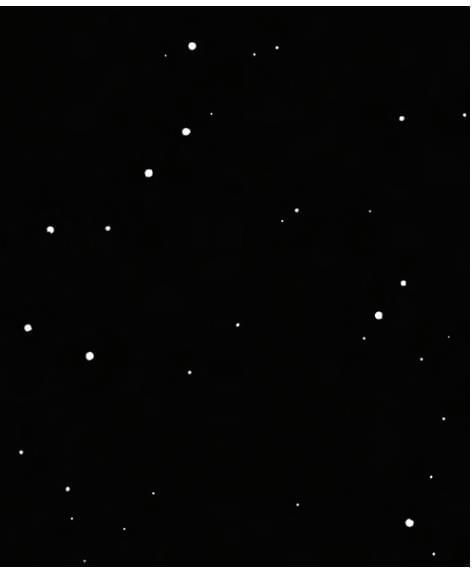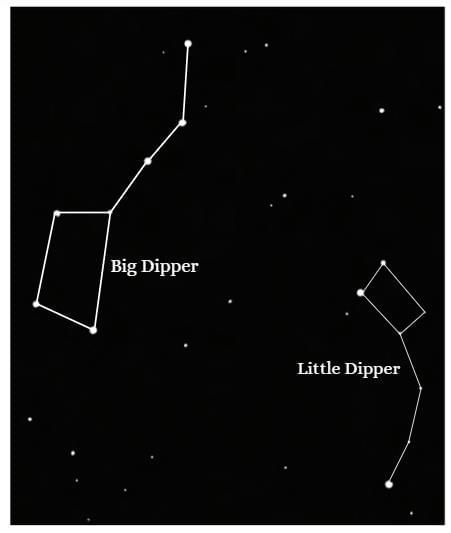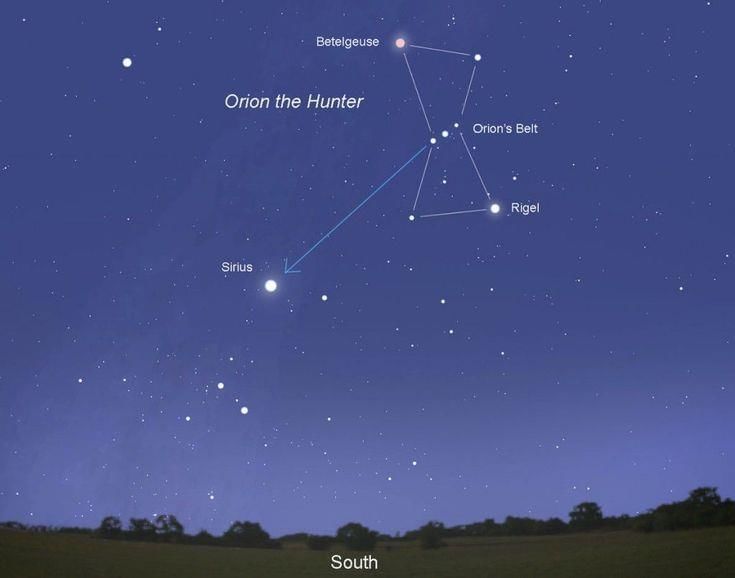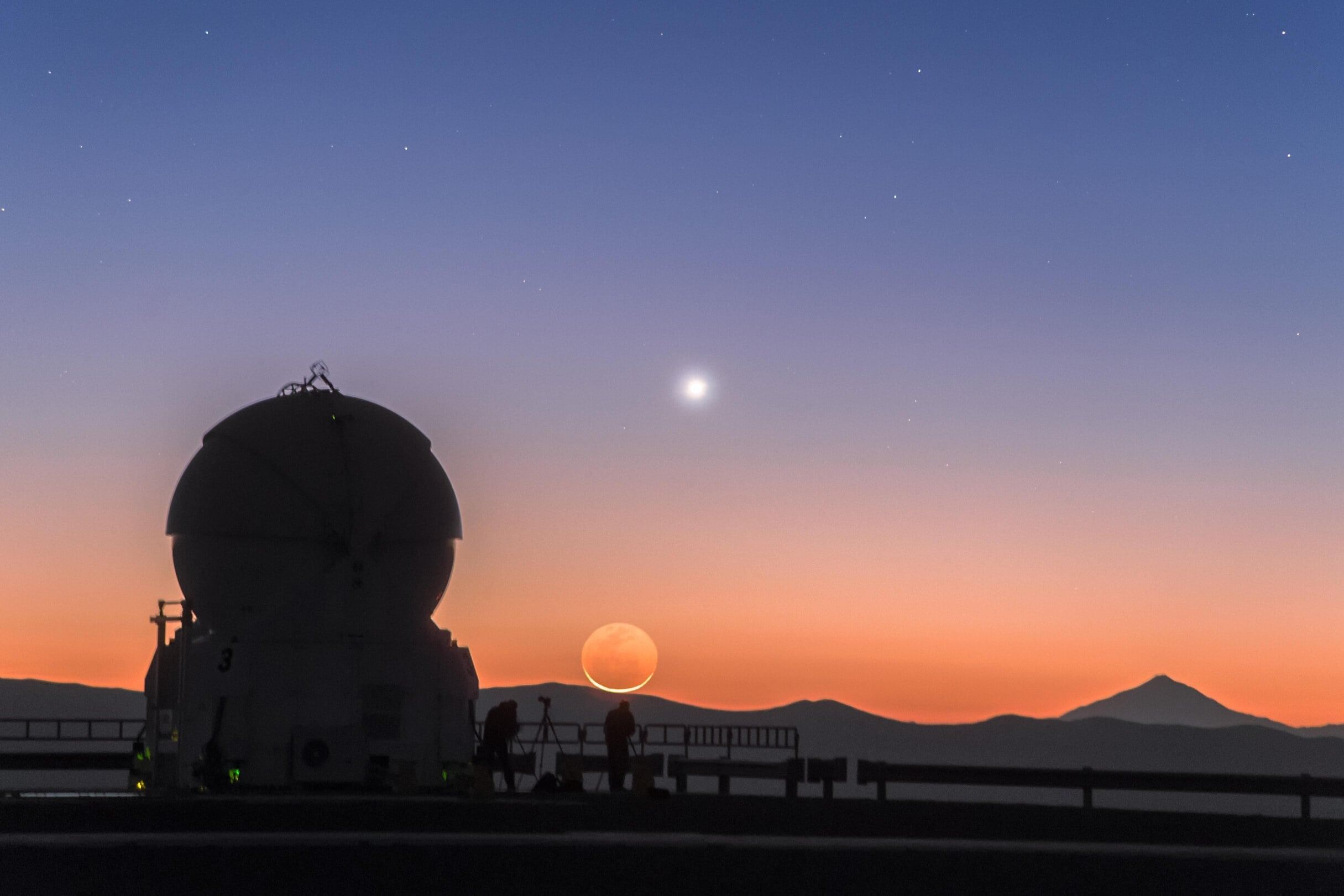NCERT Based Activity: Beyond Earth | Science for Class 6 PDF Download
Activity 12.1: Let us draw
- The figure shows bright stars in one part of the night sky.

- Look at it carefully and try to imagine a pattern formed by a group of stars.
- Draw lines to connect the stars and make the pattern.
- Think of an animal or an object that is similar to the pattern drawn by you. Write its name near your pattern.
- Repeat the above steps and make some more patterns.
- Now think of an interesting story about your patterns.
Ans: I looked at the bright stars and saw a pattern called the Big Dipper. I drew lines to connect its seven stars and made a big ladle shape. Then, I found another smaller pattern called the Little Dipper and connected its stars to make a small ladle shape.
- The Big Dipper looks like a big bear, and the Little Dipper looks like a little bear. They both are in the sky and help people find the North Star, which is at the end of the Little Dipper’s handle.
- The story I thought of is that the big bear and little bear live in the sky, watching over us and guiding travelers with the North Star.
Activity 12.2: Let us try to locate
- Look for the Big Dipper during the summer time in the early part of the night, say, around 9 p.m. View the sky above the horizon towards the northern part of the sky and identify the Big Dipper.
- Once you identify the Big Dipper, try to locate the Pole Star. Look at the two stars present at the end of the Big Dipper’s cup and imagine a straight line passing through these towards the north. At about five times the distance between these two stars, the imaginary line will lead to another star, which is not very bright. This star is the Pole Star.
Ans: First, I looked up at the night sky. The Big Dipper looks like a big spoon made of seven bright stars. Then, I found the two stars at the edge of the Big Dipper’s bowl. When I imagined a straight line passing through these two stars, I extended it towards the north. I followed this line about five times the distance between these two stars. At that point, I found a star that was not very bright. This star is called the Pole Star or North Star.
I also learned that the North Star is at the end of the handle of another smaller spoon-shaped pattern called the Little Dipper. This star helps us know the north direction because it stays in the same place in the sky.
Activity 12.3: Let us try to identify
- In India, Orion is best viewed during the months of December to April after sunset. So, look for it during that period.
- Three bright stars in a short straight line are located around the middle of Orion (imagined to be the belt of a hunter). Identify these three stars first, as this is the easiest way to find Orion.
- Once you identify Orion, it is easy to locate the very bright star Sirius, which is located close to Orion. Imagine a straight line passing through the three middle stars of Orion and look along this line towards the east. This will lead to Sirius.
Ans: I looked at the night sky in April after sunset to find the constellation Orion. It was easy to find because of three bright stars in a straight line in the middle. These stars are called Orion’s Belt.
Once I found Orion’s Belt, I imagined a straight line passing through these three stars and looked along this line towards the east. I followed this line and saw a very bright star close to Orion. This star is called Sirius. It is the brightest star in the night sky.
Activity 12.4: Let us try to identify
- For most of the year, Venus can be located either at dawn or at dusk.
- When you are viewing at dawn, look for it near the Eastern direction before sunrise.
- When you are viewing at dusk, look for it near the Western direction after sunset
Ans: Venus is a very bright planet that we can see most of the year. Sometimes, you can see it early in the morning, just before the sun rises. When you look at the sky before sunrise, look towards the east to find Venus shining like a bright star.
Other times, Venus appears just after the sun sets. So, after sunset, look towards the west and you will find Venus shining very brightly in the sky.
Venus is called the Morning Star when it appears in the east before sunrise, and the Evening Star when it shows up in the west after sunset. It never stays in the sky all night because it is closer to the sun than Earth.
|
69 videos|288 docs|27 tests
|
FAQs on NCERT Based Activity: Beyond Earth - Science for Class 6
| 1. What are the different celestial bodies that exist in our solar system? |  |
| 2. How do scientists study and explore space beyond Earth? |  |
| 3. What is the significance of the Milky Way galaxy in our understanding of the universe? |  |
| 4. What are the differences between inner and outer planets? |  |
| 5. What role do asteroids and comets play in our solar system? |  |















